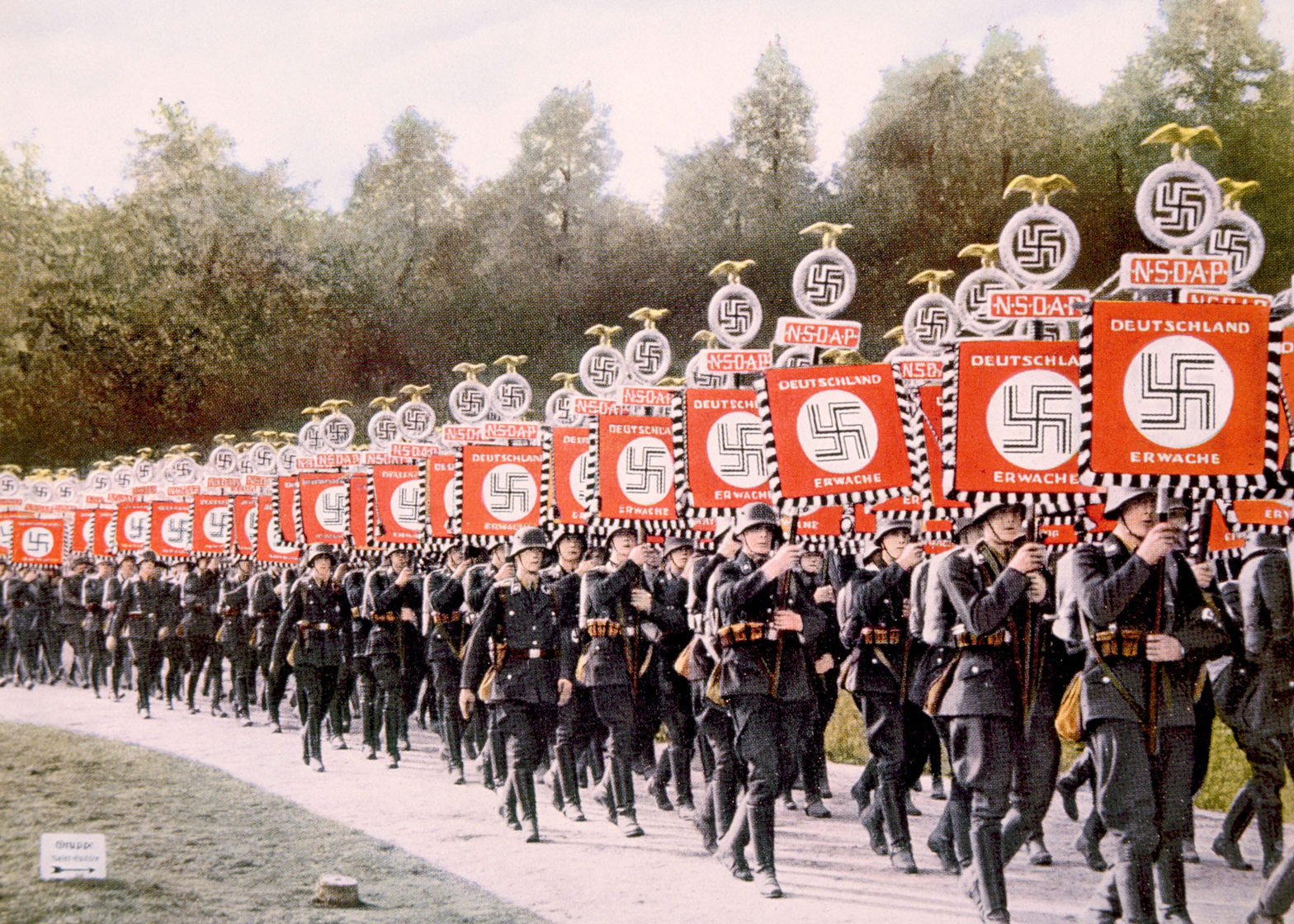Pritzker Prize-winning architect Philip Johnson was an impassioned supporter of Nazism, in which he found a "new international ideal", according to a new book by American journalist Marc Wortman.
Wortman describes Johnson's role in pushing the Nazi agenda in the US in an in-depth story in Vanity Fair magazine, adapted from the writer's new book, 1941: Fighting the Shadow War, which examines America's involvement in the second world war.
The author describes Johnson's growing support for the Nazis in the 1930s and his efforts to import Fascism to America.
"He found in Nazism a new international ideal," writes Wortman. "The aesthetic power and exaltation he experienced in viewing Modernist architecture found its complete national expression in the Hitler-centred Fascist movement."
Wortman claims Johnson took no issue with the Nazi's treatment of Jews or creators of "degenerate art", even as he helped friends at the Bauhaus flee Germany.
The author also describes how Johnson aligned himself with Fascist supporters in the US and participated in political campaigns. He backed controversial figures such as Charles Edward Coughlin, an antisemitic Roman Catholic priest who promoted Fascist ideas. For one of Coughlin's rallies in Chicago, Johnson allegedly designed a speaking platform modelled after one used by Hitler.
Johnson, one of America's best-known architects of the 20th century, was born in 1906 to a wealthy family in Cleveland, Ohio. He was awarded the first ever Pritzker Prize – architecture's equivalent of the Nobel Prize – in 1979, and died in 2005.
An illustrious figure in the New York art world, he funded the creation of the architecture department at the city's Museum of Modern Art. His 1932 show on the International Style is credited for introducing Americans to prominent modern European architects, including Walter Gropius and Le Corbusier, and "set the course of world architecture for the next 40 years," Wortman writes.
Soon after his ground-breaking show at MoMA, Johnson travelled to Berlin and attended a youth rally led by Hitler. "It would be the first time he saw Hitler," Wortman writes. "That day, he experienced a revolution of the soul, a revelation he would ultimately describe as 'totally febrile'."
Johnson returned to Europe several times as the Third Reich expanded, says Wortman.
"Johnson found in the Nazi Party rallies much of the spectacle of Wagnerian opera — an artistic performance encompassing all the audience's senses and beyond its power to resist," writes Wortman. "Here was a vision combining aesthetics, eroticism, and war, forces capable of sweeping away the past and building a new world."
Johnson later filed war reports from Poland for Social Justice, an antisemitic newspaper published by Coughlin. The architect described Germany's occupation of the country as "an unmitigated triumph for the Polish people" and claimed that the Germany military had "inflicted scant harm on the country's civilian life," according to Wortman.
The architect's pro-Nazi efforts started to garner attention back in the US. Harper's Magazine listed him as a leading American Nazi in a 1940 article, and the FBI began to track his activities.
Upon the urging of friends, Johnson "knew he had to change his spots," writes Wortman. At age 34, he enrolled at Harvard's Graduate School of Design and sought to erase his pro-Nazi past, even starting an anti-Fascist group on campus. "Johnson always wanted to be on the winning side," writes Wortman. "The Thousand-Year Reich was not to be, but so far the American century had been turning out just fine."
Johnson went on to design seminal works such as the Glass House, completed in 1949, and New York's AT&T Building, which opened in 1984. He received the AIA's Gold Medal in 1978 and the first Pritzker Prize, awarded in 1979. He died in 2005 while asleep at his Glass House.
Wortman's 416-page book was released this month by Grove Atlantic.

